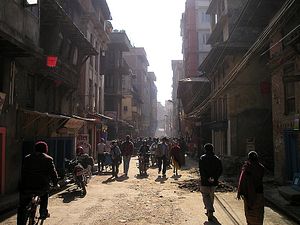What makes Nepali women share the spirit of the #MeToo movement? It’s the similar horrors that they face in the seven provinces of the new federal state. Their rage, however, has been directed against escalating rape crimes in the country. Two things come to mind after knowing about this movement: First, the state is failing to protect its own citizens and, second, the group is making an impact on people.
According to data from the Nepal Police, 1,480 rape cases have been registered between 2017 and 2018. That’s four cases every day, and 120 every month. The horrifying part is that 6,627 rape cases have been registered from 2010 to 2017. The data summarizes the grave situation Nepali women face.
The #RageAgainstRape social media movement is spreading like a wildfire in Nepal. The settling of a stable democratic nation ignited the hope among many that rule of law would be established effectively, but it hasn’t happened in this way. Feminists in Nepal believe that the discriminatory citizenship law treats Nepali women as second-class citizens and this has empowered men to commit crimes.
A new citizenship amendment calls for Nepali women to provide proof of citizenship of their husbands whereas Nepali men need only provide proof of their own citizenship while applying for their children’s citizenship.
The #RageAgainstRape social media movement was initiated by Hima Bista and Richa Thapa after a rape case at the Landmark Hotel emerged in February. The group has since witnessed an increase in awareness among people and more victims are coming out to file reports.
On its Facebook page, the movement states its mission is to create pressure on the Nepali government to safeguard rape victims and create an environment where potential perpetrators are deterred. The group continues to work for the protection of Nepali women across the nation.
A lot of Nepali women, however, worry if the #RageAgainstRape might be in vain, but activists like Bista believe otherwise. We’ve seen an increase in awareness and that’s a good start for us,” she says. They even provided 30,000 Nepali rupees ($272) to the victim of the infamous Godamchaur rape case. Despite their efforts, rape case numbers have jumped meteorically.
Richa Bhattarai, a World Bank consultant and member of the group, says:
We are deeply disturbed and pained by the incidences of rape and violence against women mounting around us each day. We will continue to raise our voices against these atrocities, to create pressure and increase at least a little sensitivity at the societal, policy making and governance levels. Our aim is to change the mindset of the public and government and make violence against women unacceptable in every sphere of society.
The movement is clearly a force to reckon with since the state and the police appear hapless at times. The group believes that it is not their role to do the policing, but they believe what they can do is create awareness and try to deter crime in the first place. There are various organizations existing to address the needs of Nepali women but the imperative question here is: Why isn’t the number of rape cases going down?
Some critics argue that the problem lies in the country’s patriarchal society and the Internet boom. The unabated exposure to pornography and ensuing male entitlement gives off the false notion that women can be attacked physically. Can we really blame the uncensored internet? Many psychologists believe porn normalizes violence against women, plays a role in the sexualization of women, and has adverse effects on people.
Legal loopholes and complications are still an issue for rape victims. The police often take a long time to find the suspect and at times DNA testing results don’t return quickly enough. This discourages most victims and that’s what the movement is working against. One UK-based medical practitioner who spoke to me revealed that the DNA test can be easily manipulated (if there’s an external influence or pressure) and Nepal still lags since the nation doesn’t have the technology to find out about the culprits from hair analysis testing. The forensic testing authorities in Nepal are essentially powerless.
Things are about to change from next month, however, since the existing rape law in Nepal will be updated on August 17. Criminals will be handed a twenty-five year jail term for the crime and if the victim is a minor, physically challenged person, or an elderly woman, then the culprit will face life in prison. But the problem in Nepal for a long time has been the implementation of laws. The nation might have the best laws, but when it comes to enforcement, criminals tend to have their way.
In the absence of capital punishment, strong laws, policing and effective forensic department should come to the rescue of Nepali women. Additionally, new medical practices should be incorporated to overlook this issue. Crimes, after all, can be deterred at the grassroots level. If not, Nepali women will continue to remain second-class citizens, trying to deter violence against them. While the social media movement will continue to rage on against the dying light.
Arun Budhathoki is a freelance journalist based in Kathmandu. He’s the editor-in-chief with Kathmandu Tribune. His works have appeared in India Today, The Huffington Post (India), Daily O, The Citizen (India), Republica, The Kathmandu Post, and Asia Pacific Daily.
































